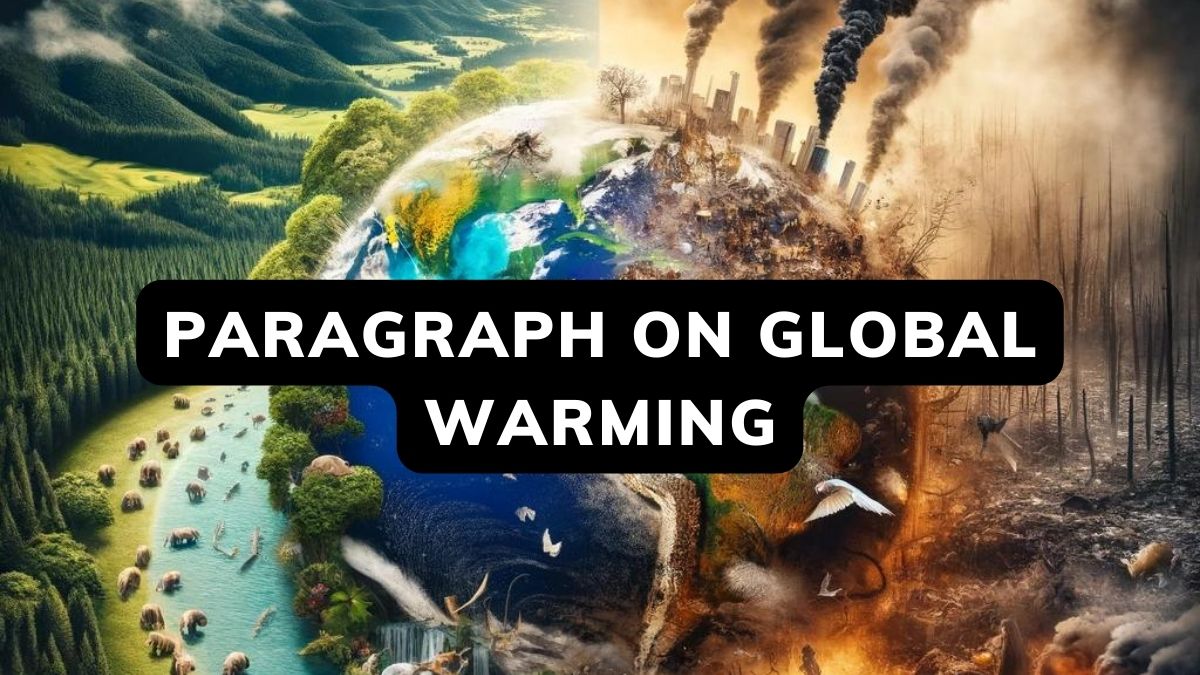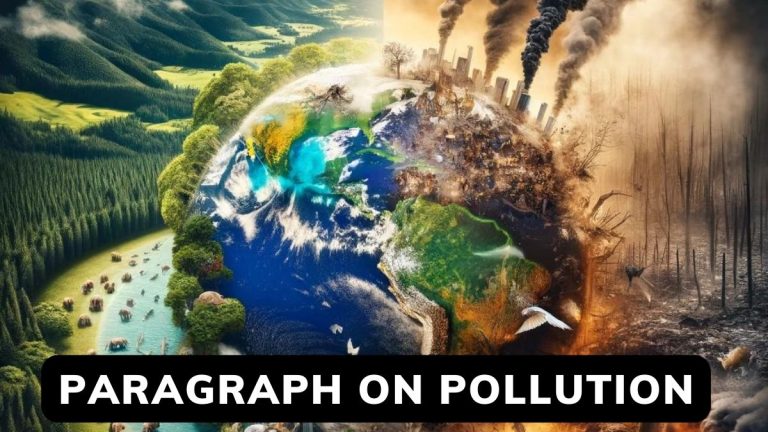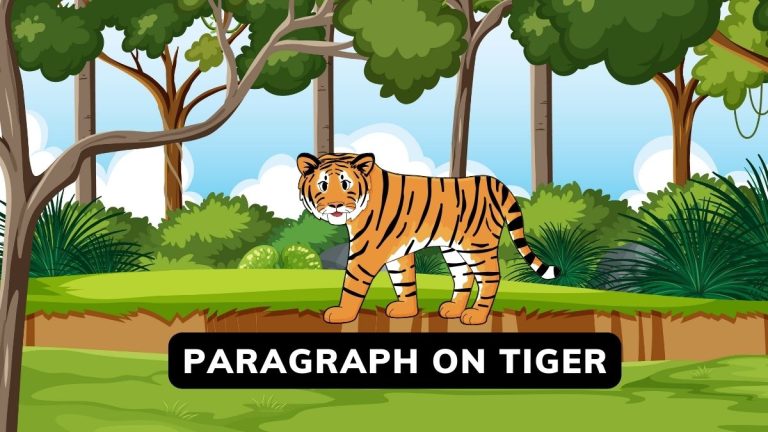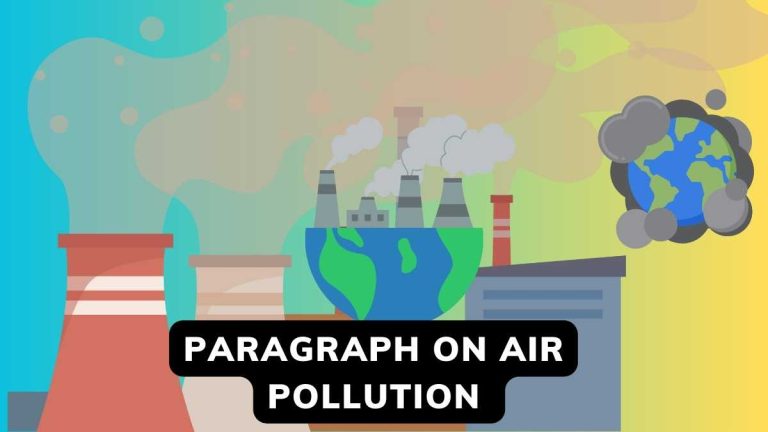Paragraph On Global Warming In 100-300 Words And Class 5-10
Global warming is a ticking time bomb, silently escalating beneath our collective radar, yet its impact resonates loudly across every corner of the Earth. This invisible threat, driven by human activities, is rapidly reshaping our world, posing unprecedented challenges to our way of life and the natural ecosystems we depend upon.
From young minds in elementary school classrooms to seasoned researchers in scientific communities, the discourse on global warming spans across various levels of complexity and urgency. Whether it’s a simple explanation suitable for a fifth grader or an in-depth analysis for a tenth grader, the message remains clear: our planet is warming at an alarming rate, and understanding this phenomenon is crucial.
Through a series of concise explorations, ranging from 100 to 300 words, we embark on a journey to unravel the intricacies of global warming. Each piece, tailored to a specific educational level, builds upon the last, gradually deepening our comprehension and highlighting the vital role of awareness and action in confronting this global crisis.
Paragraph On Global Warming In 100 Words
Global warming, a dire environmental challenge, results from the accumulation of greenhouse gases like carbon dioxide and methane in the Earth’s atmosphere. Primarily caused by human activities such as burning fossil fuels, deforestation, and industrial processes, it leads to a significant increase in the planet’s average temperature. This warming triggers severe climate changes, including extreme weather events, rising sea levels, and the melting of polar ice. These changes threaten biodiversity, human health, and economies worldwide. Addressing global warming requires global cooperation to reduce greenhouse gas emissions, transition to renewable energy sources, and enhance conservation efforts, ensuring a sustainable future for all living beings on the planet.
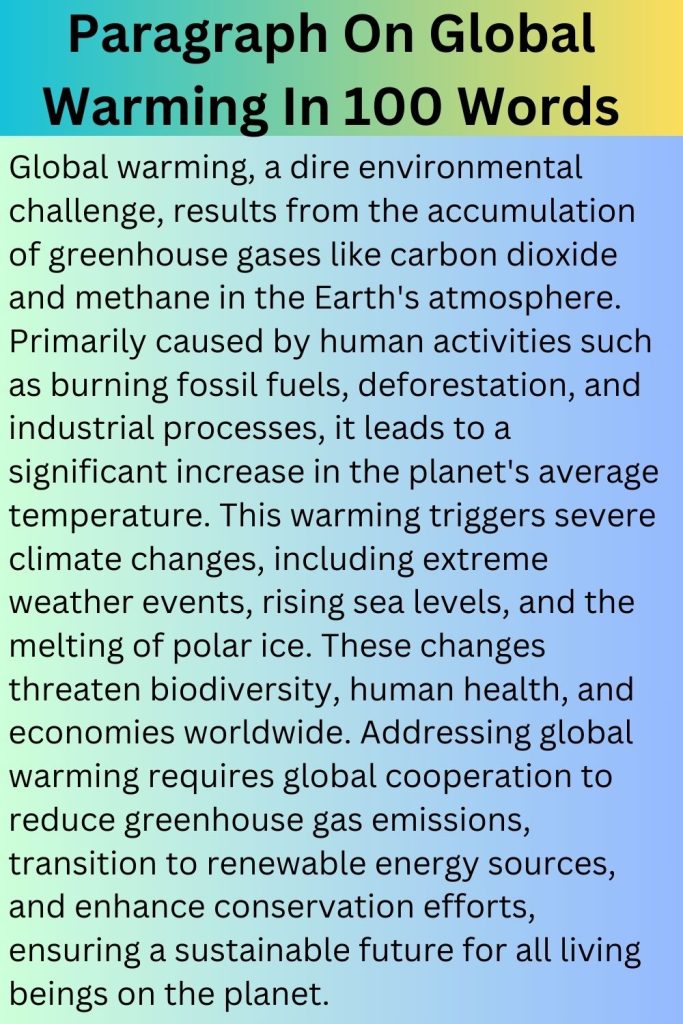
Paragraph On Global Warming In 150 Words
Global warming is a critical environmental issue marked by a steady increase in Earth’s average surface temperature, largely due to human-induced emissions of greenhouse gases such as carbon dioxide, methane, and nitrous oxide. This phenomenon is primarily the result of burning fossil fuels, extensive deforestation, and industrial activities that release vast amounts of these gases into the atmosphere, enhancing the natural greenhouse effect. The repercussions of global warming are far-reaching and multifaceted, leading to erratic and extreme weather patterns, melting glaciers and ice caps, rising sea levels, and shifts in wildlife populations and habitats. These environmental changes pose significant risks to human health, food security, water resources, and economic stability. Addressing global warming demands urgent international cooperation and action, including adopting clean energy technologies, enforcing emissions reductions, and promoting sustainable land use practices. By taking decisive steps now, we can mitigate the impacts of global warming and safeguard the planet for future generations, ensuring a balance between human development and environmental preservation.
Paragraph On Global Warming In 200 Words
Global warming is a pressing and complex environmental issue that signifies a continuous increase in the Earth’s surface temperature. Attributable predominantly to human activities, this phenomenon stems from the excessive accumulation of greenhouse gases, such as carbon dioxide, methane, and nitrous oxide, in the atmosphere. These gases, largely emitted through the burning of fossil fuels, deforestation, and various industrial processes, enhance the natural greenhouse effect, trapping more heat and leading to a rise in global temperatures. The consequences of global warming are profound and wide-ranging. It disrupts climate patterns, leading to extreme weather events like hurricanes, droughts, and heatwaves, and causes the melting of polar ice caps and glaciers, resulting in rising sea levels and the loss of habitat for many species. Additionally, global warming impacts agriculture and food production, threatens coastal communities with flooding, and exacerbates health problems related to heat and air quality.
Addressing global warming requires a concerted effort from international communities, governments, industries, and individuals. It calls for a swift transition to renewable energy sources, such as solar and wind, improved energy efficiency, and the development of green technologies. Reforestation efforts and sustainable agriculture practices also play a critical role in absorbing carbon dioxide from the atmosphere. Public awareness and education on reducing carbon footprints can empower individuals to make environmentally responsible choices. Only through collective action and sustainable policies can we hope to mitigate the effects of global warming and ensure a habitable planet for future generations.
Paragraph On Global Warming In 250 Words
Global warming is an escalating environmental crisis that denotes a sustained increase in Earth’s average surface temperature, primarily due to the accumulation of greenhouse gases in the atmosphere. This phenomenon, significantly driven by human activities such as the combustion of fossil fuels (coal, oil, and natural gas), deforestation, and industrial processes, leads to an enhanced greenhouse effect. Greenhouse gases, including carbon dioxide, methane, and nitrous oxide, trap solar radiation in the Earth’s atmosphere, preventing the heat from escaping into space, thus warming the planet. The implications of global warming are profound and far-reaching, affecting nearly every aspect of the Earth’s environment and human society. It results in drastic weather changes, with more frequent and severe droughts, storms, and heatwaves. The melting of ice caps and glaciers, along with the thermal expansion of seawater, contributes to rising sea levels, endangering coastal communities and ecosystems.
Moreover, global warming disrupts biodiversity, leading to shifts in migration patterns and the extinction of certain species unable to adapt to rapid temperature changes. It poses significant threats to agriculture and food security, as changing weather patterns affect crop yields and livestock productivity. Human health is also at risk, with increased incidences of heat-related illnesses and diseases spread through water and mosquitoes.
Combatting global warming necessitates a global response, involving the reduction of greenhouse gas emissions through energy efficiency, a shift towards renewable energy sources, and sustainable land use practices. Policies such as carbon pricing and investments in green technology play crucial roles. Additionally, reforestation and conservation efforts can enhance the natural absorption of carbon dioxide. Public awareness and behavioral changes towards more sustainable lifestyles are vital. The time to act is now, with urgency and determination, to mitigate global warming and safeguard our planet for future generations.
Paragraph On Global Warming In 300 Words
Global warming, a critical aspect of contemporary environmental issues, refers to the ongoing increase in Earth’s average surface temperature. This trend is primarily attributed to human activities that release substantial amounts of greenhouse gases into the atmosphere, such as carbon dioxide, methane, and nitrous oxide. The primary sources of these emissions include the burning of fossil fuels for electricity, heat, and transportation, industrial processes, agricultural practices, and deforestation. These activities amplify the natural greenhouse effect, trapping more of the sun’s heat in the Earth’s atmosphere, thus leading to global warming.
The consequences of global warming are diverse and far-reaching, affecting ecosystems, weather patterns, sea levels, and biodiversity across the globe. It leads to more frequent and intense extreme weather events, such as hurricanes, floods, droughts, and heatwaves, posing significant risks to human life, infrastructure, and livelihoods. Furthermore, changes in temperature and precipitation patterns disrupt agricultural practices, endanger food security, and exacerbate water scarcity. The acidification of oceans, a result of absorbing more carbon dioxide, impacts marine life, particularly coral reefs and the species that depend on them.
Addressing global warming requires comprehensive and coordinated global action. This includes transitioning to renewable energy sources, like solar and wind, to reduce dependency on fossil fuels; enhancing energy efficiency in buildings, vehicles, and appliances; and promoting sustainable land use and agriculture practices. Efforts to preserve and restore forests and other natural carbon sinks are crucial for absorbing CO2 from the atmosphere. Moreover, fostering innovation in green technology and encouraging sustainable lifestyle choices among individuals can contribute significantly to reducing greenhouse gas emissions. International cooperation and the implementation of effective climate policies are essential to mitigate the impacts of global warming and protect the planet for future generations. The urgency of the situation demands immediate action from governments, businesses, communities, and individuals alike.
Paragraph On Global Warming For Class 5
Global warming is like the Earth getting a fever because there’s too much pollution in the air. When we use cars, factories, and cut down lots of trees, we create gases that trap the sun’s warmth close to Earth, making it hotter. This can cause our weather to change in ways that can be harmful, like causing more heatwaves or making storms stronger. It’s important for us to help cool down the Earth by doing things like planting more trees, using less electricity, and riding bikes instead of always using cars. By working together, we can help make our planet a better place for everyone.
Paragraph On Global Warming For Class 6
Global warming happens when the Earth heats up more than usual because of too many greenhouse gases in the air. These gases, like carbon dioxide, come from things we do every day, such as driving cars, using electricity made from coal, and cutting down forests. This extra heat changes our weather, making some places much hotter, causing more powerful storms, and melting ice at the poles, which can lead to rising sea levels. It’s important for us to act by reducing our use of fossil fuels, increasing our use of clean energy like solar and wind, and planting more trees. Every small action helps, like turning off lights when we’re not using them or riding a bike instead of asking for a car ride. By making these changes, we can help slow down global warming and protect our planet for future generations.
Paragraph On Global Warming For Class 8
Global warming refers to the gradual increase in Earth’s average surface temperature, primarily due to the release of greenhouse gases such as carbon dioxide, methane, and nitrous oxide. These gases are produced through human activities, including burning fossil fuels for energy, deforestation, and industrial processes. As these gases accumulate in the atmosphere, they trap more of the Sun’s heat, leading to a warmer Earth. This warming has significant implications, including erratic weather patterns, rising sea levels, and the disruption of natural habitats. It’s crucial for us to understand the impact of our actions on the environment and take steps towards sustainability. This can include reducing energy consumption, using renewable energy sources, and supporting policies aimed at mitigating climate change. By taking collective action, we can work towards stabilizing global temperatures and ensuring a healthier planet for future generations.
Paragraph On Global Warming For Class 9
Global warming is a pressing environmental issue characterized by the steady increase in Earth’s average surface temperature. This phenomenon is largely attributed to human activities that release greenhouse gases, such as carbon dioxide, methane, and nitrous oxide, into the atmosphere. These gases, emanating from the burning of fossil fuels, deforestation, and industrial processes, create a ‘greenhouse effect,’ trapping heat and causing the planet’s temperature to rise. The consequences of global warming are profound and far-reaching, including extreme weather events, melting polar ice caps, rising sea levels, and the disruption of ecosystems and wildlife. It’s imperative for us, especially the younger generation, to understand the severity of global warming and its potential to drastically alter our planet. Taking action through sustainable living, advocating for renewable energy, and supporting environmental conservation efforts are critical steps toward mitigating global warming. As students, our awareness, choices, and involvement can contribute significantly to the global efforts in combating this existential threat.
Paragraph On Global Warming For Class 10
Global warming, a complex environmental issue, signifies the steady rise in Earth’s average surface temperature due to the greenhouse effect caused by increased levels of greenhouse gases, including carbon dioxide, methane, and nitrous oxide. These gases are primarily released through human activities such as the burning of fossil fuels, deforestation, and industrial processes, leading to a thicker atmospheric blanket that traps more solar radiation. The consequences of global warming are far-reaching and multifaceted, affecting climate patterns, causing extreme weather events, accelerating ice melt, and leading to rising sea levels. The urgency to address global warming demands a comprehensive understanding and proactive measures. It calls for a shift towards renewable energy, improved energy efficiency, and sustainable living practices. Additionally, it underscores the importance of global cooperation in reducing emissions and adapting to inevitable changes. Educating ourselves and advocating for policies that address the root causes of global warming are critical steps towards mitigating its impact and safeguarding our planet for future generations.
Paragraph On Global Warming
Global warming, a critical aspect of climate change, refers to the long-term rise in Earth’s average surface temperatures, primarily due to human activities like the burning of fossil fuels and deforestation. This phenomenon results from the accumulation of greenhouse gases (GHGs) such as carbon dioxide, methane, and nitrous oxide in the atmosphere, which trap heat from the sun and prevent it from escaping back into space.
Since the Industrial Revolution, the concentration of these gases has increased significantly, leading to an estimated increase in global surface temperatures by 1.1°C (1.98°F) between the late 19th century and the early 21st century. This warming has had profound effects on the planet, contributing to more frequent and severe weather events, including storms, droughts, and wildfires, as well as rising sea levels and melting ice caps. Despite a consensus among scientists about the causes and risks of global warming, it remains a subject of political and public debate, underscoring the urgency for global cooperation and action to mitigate its impacts.

